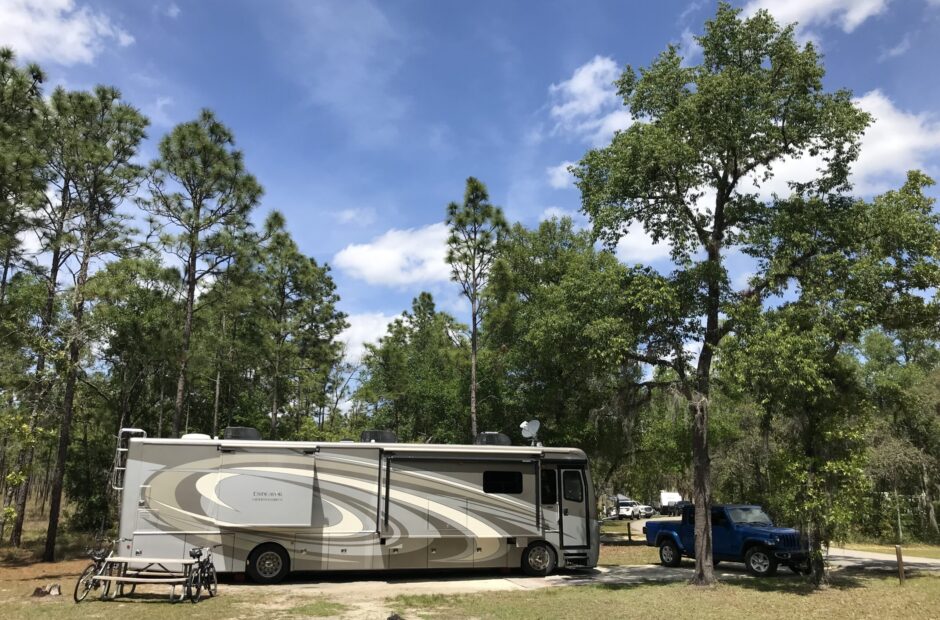O’Leno State Park, High Springs, Florida
We didn’t walk much today, but we had fun other ways!
We ordered our “reverse shuttle” (it was only $5!!) and off we went, floating the entire 3 miles downstream! It wasn’t as sunny today, but still, it’s a beautiful ride! Other than the fish which you’ll see later, we didn’t start taking pictures until we were past our turn-around point from yesterday. I mean, it was just yesterday, after all. No need to take those again, right?
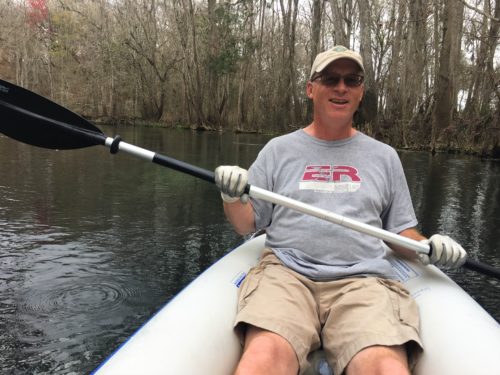
It’s really hard to turn around in an inflatable! Especially when your seat has a back on it!
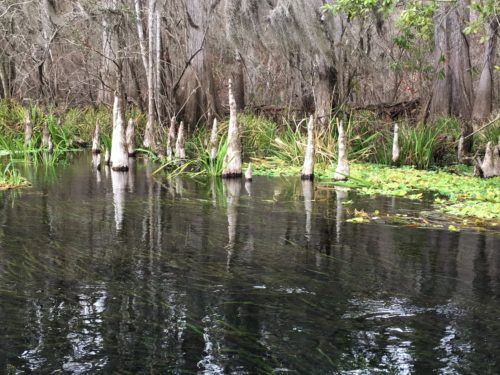
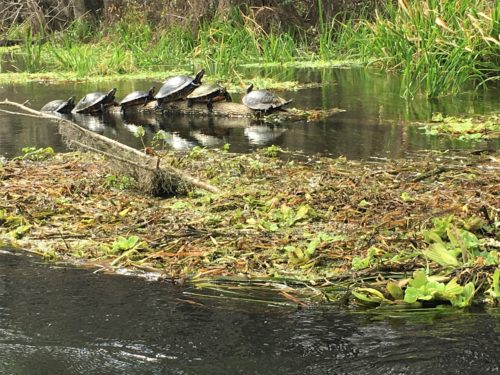
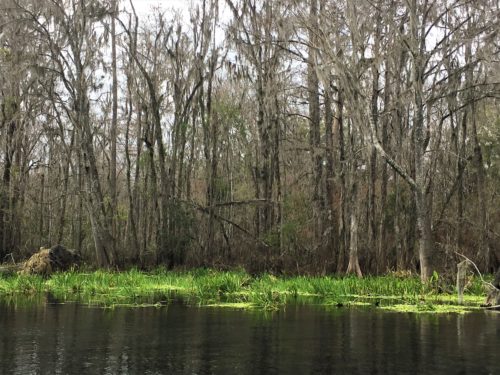
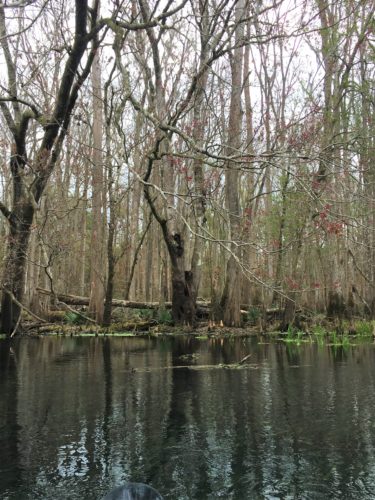
The scenery is so different at this end!
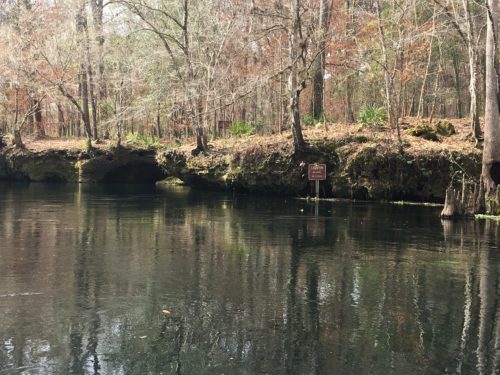
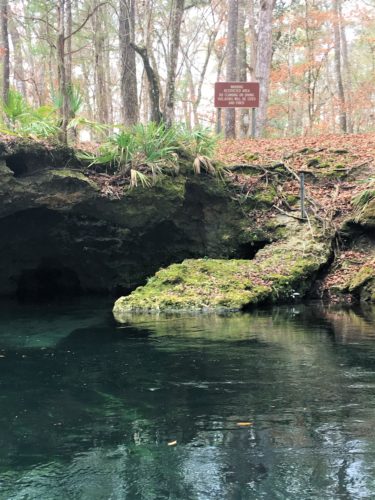
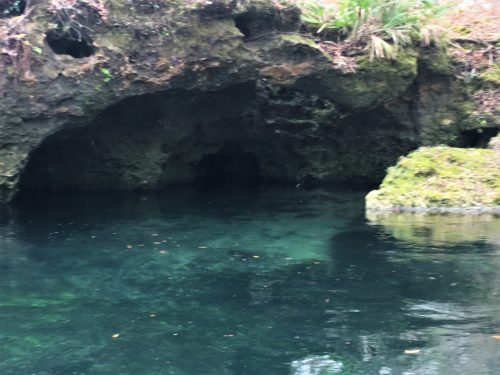
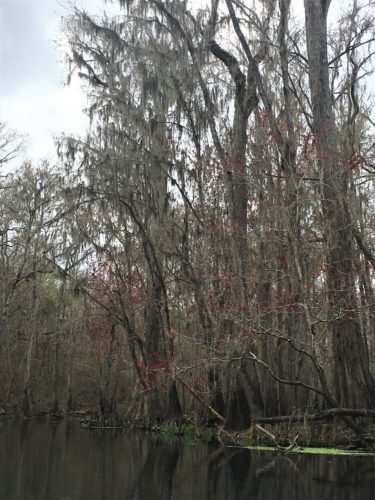
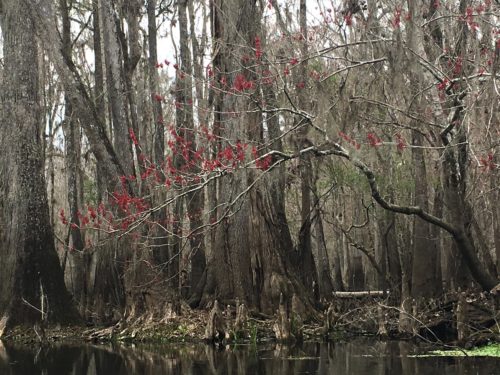
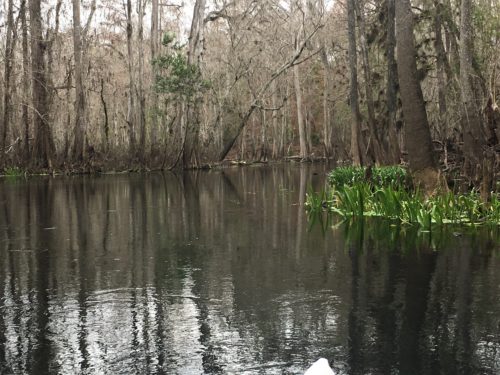
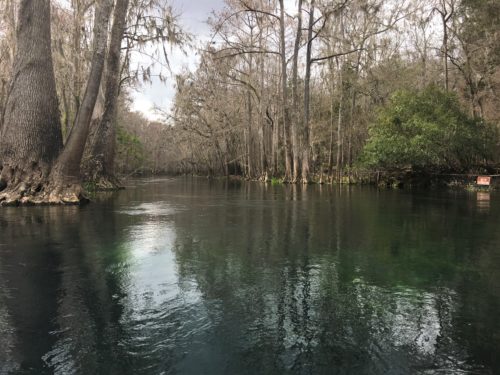
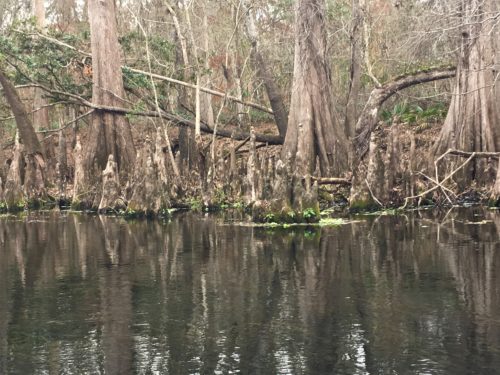
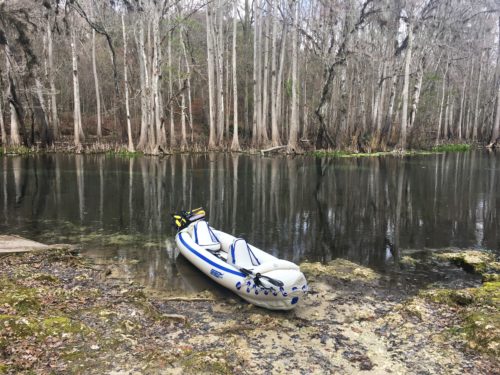
This is the spot we stopped at yesterday to look around.
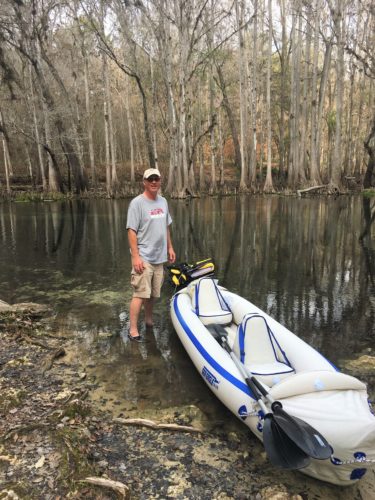
Here are a few of the critters we saw today:
- Black crowned night heron – Black-crowned Night-Herons often spend their days perched on tree limbs or concealed among foliage and branches. They forage in the evening and at night, in water, on mudflats, and on land. In flight they fold their head back against their shoulders, almost making the neck disappear.
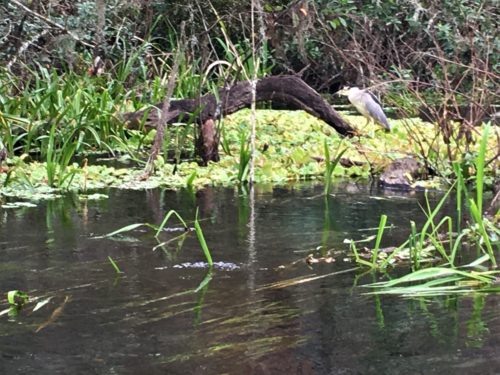
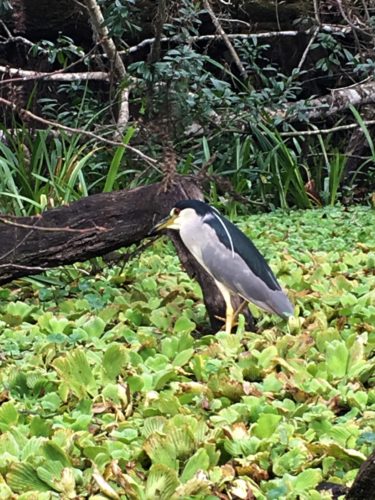
Black Crowned Night Heron – – in the daytime!
- Little Blue Heron – The Little Blue Heron is a stand-and-wait predator, rather than a frenetic, dashing-about predator. They watch the water for fish and other small morsels, changing locations by walking slowly or by flying to a completely different site.
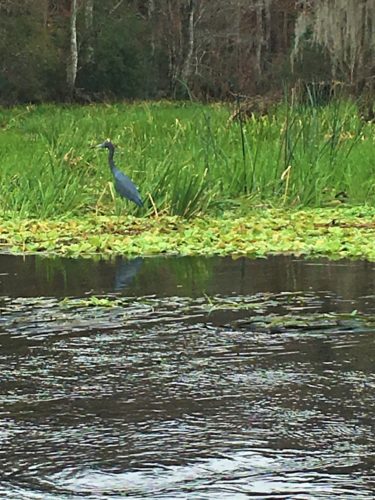
Little Blue Heron
- Great Blue Heron – Hunting Great Blue Herons wade slowly or stand statue-like, stalking fish and other prey in shallow water or open fields. Watch for the lightning-fast thrust of the neck and head as they stab with their strong bills. Their very slow wingbeats, tucked-in neck and trailing legs create an unmistakable image in flight.
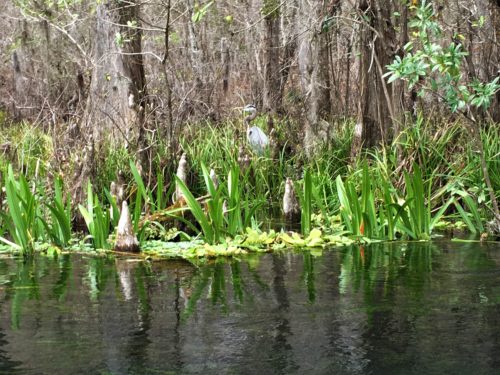
Great Blue Heron
- Suwannee Cooter – The Suwannee Cooter is one of the largest turtles in the Family Emydidae. They can reach a length of 17 inches. Other than a description and that they eat aquatic plants, this is all I could find on them.
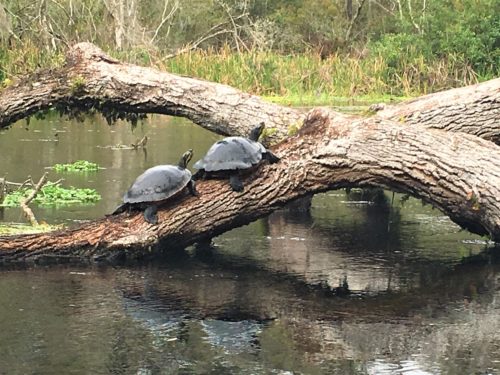
Suwannee Cooters
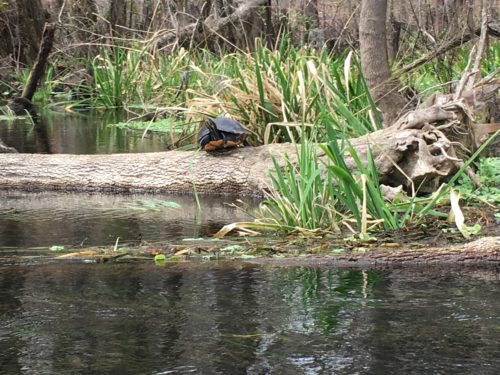
Here’s a better picture of their color
- Great Egret – Great Egrets wade in shallow water (both fresh and salt) to hunt fish, frogs, and other small aquatic animals. They typically stand still and watch for unsuspecting prey to pass by. Then, with startling speed, the egrets strike with a jab of their long neck and bill.
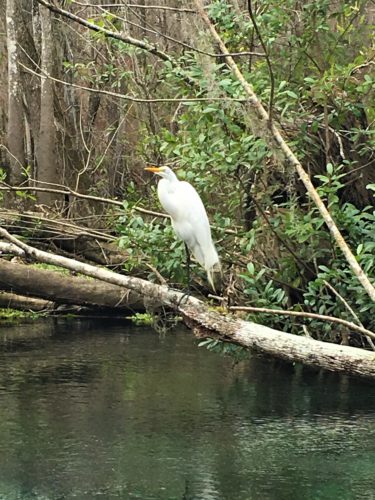
Great Egret
- Striped mullet – As far as I can tell, this is the ‘jumping fish’ we saw. They grow to be 9-19 inches, weigh in at 1-3 pounds, and can jump about 3 feet. This time I caught them jumping!
- Large noisy flock of ‘something’ – they’re sandhill cranes! – Sandhill Cranes forage for grains and invertebrates in prairies, grasslands, and marshes. They do not hunt in open water or hunch their necks the way herons do. Sandhill Cranes form extremely large flocks—into the tens of thousands—on their wintering grounds and during migration. They often migrate very high in the sky. Their bugling calls are unique and can be heard from miles away.

Sandhill Cranes
- Itchetucknee Silt Snail (we didn’t actually see these, just where they live 😊) – Also known as the sand-grain snail for its resemblance to a grain of sand, the Ichetucknee siltsnail is a tiny freshwater snail native to Florida — just 2 or 3 millimeters wide with a translucent, iridescent brownish shell. But not only is this snail tiny — so is its chance of recovery if it doesn’t get help right away. The species is so imperiled that it has only one population with a known range of just 10 square yards of Coffee Spring in its namesake Ichetucknee Springs, where it lives among submerged mosses and cypress roots.
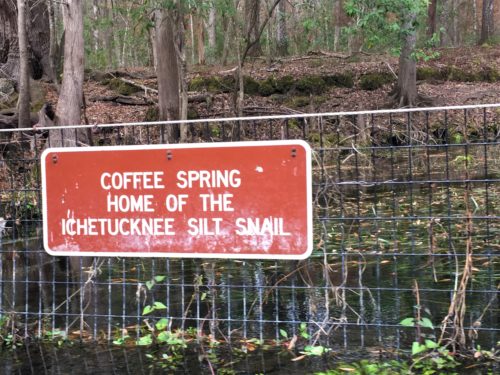
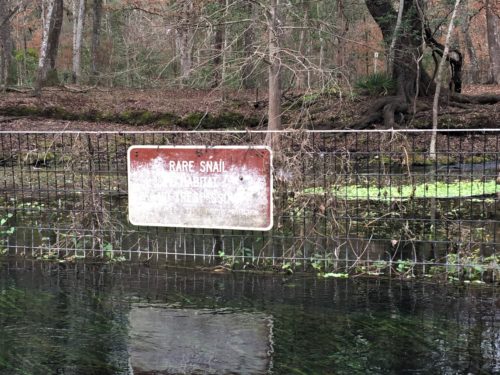
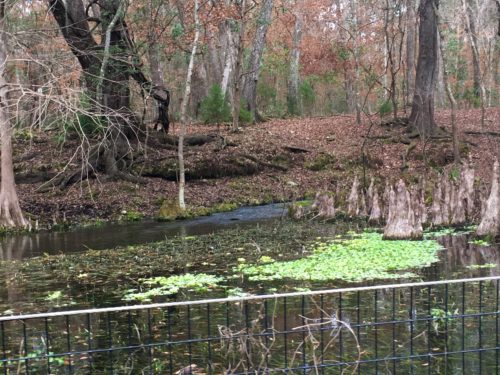
Home of the Silt Snail
- Manatees! Oh WOW!!! We saw two manatees!!! Blaine struggled to keep us stopped as much as possible because they weren’t moving very much, just slow and lazy-like. What an experience!! Since our pictures didn’t turn out great, I’ve included some better ones to go along with ours. – The Florida manatee, Florida’s state marine mammal, is a large aquatic relative of the elephant. They are grayish brown in color and have thick, wrinkled skin on which there is often a growth of algae. Their front flippers help them steer, or sometimes crawl, through shallow water. They also have powerful, flat tails that help propel them through the water. Despite their small eyes and lack of outer ears, manatees are thought to see and hear quite well. Did you know that a manatee’s lungs are 2/3 the length of its body? And they are well-known for their gentle, slow-moving nature.
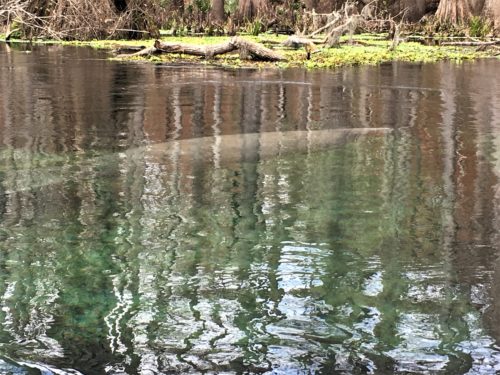
We’ve looked and looked and now . . .
There they are!!!!
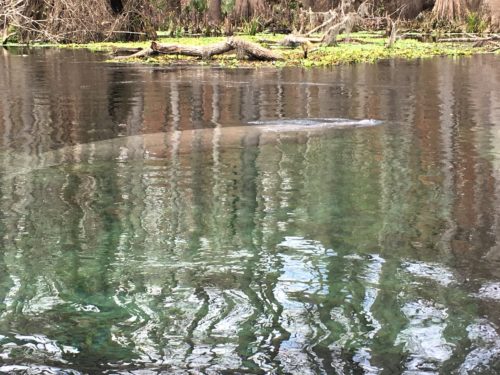
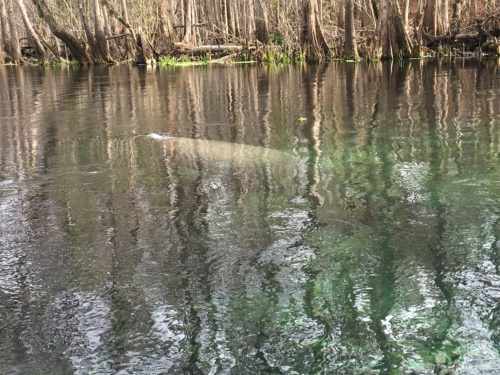
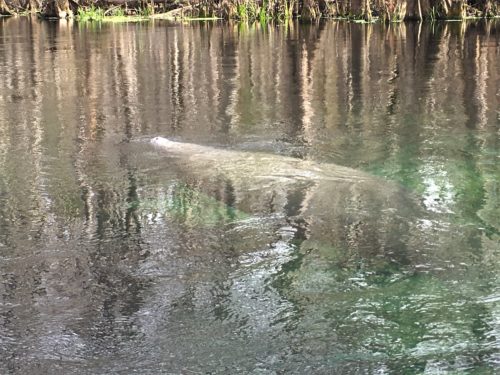
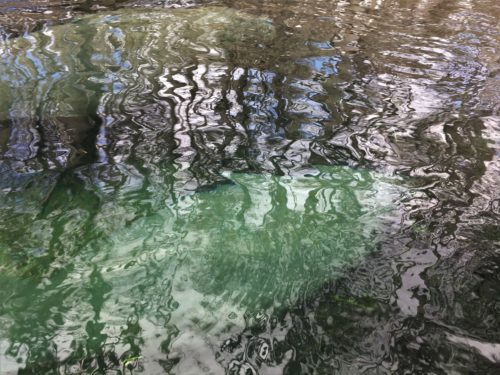
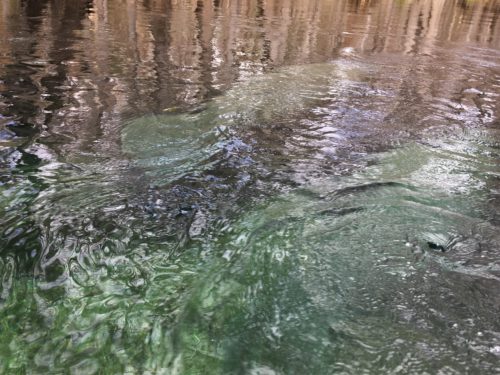
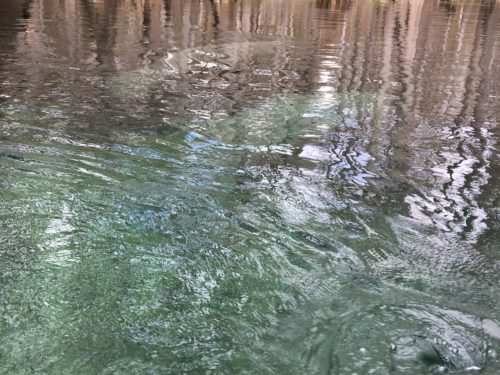
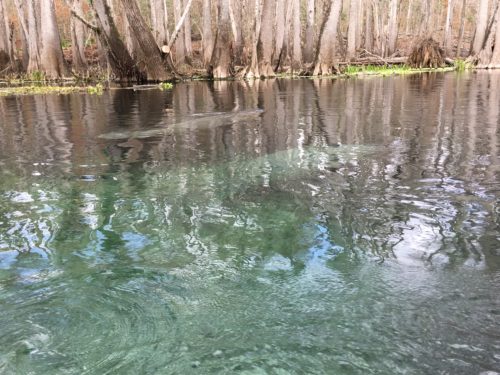
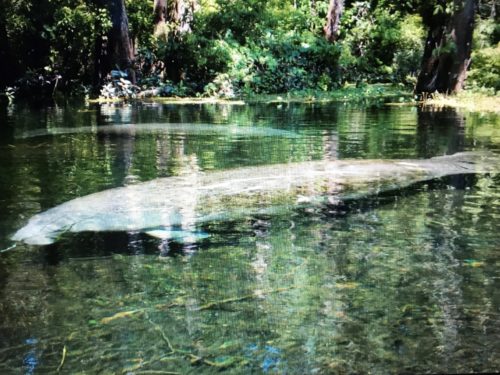
This picture looks a lot like what we saw!
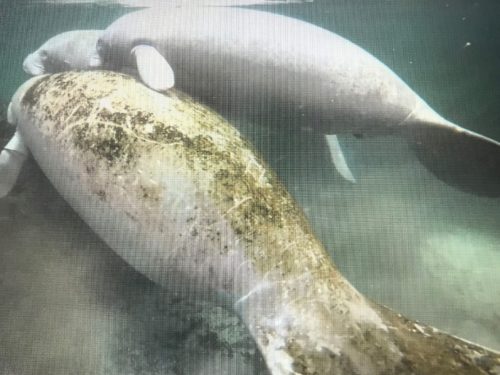
It’s so serene this time of year! I say that because I asked our driver if they get busy in the summer. He said they usually have about 5,000 visitors – – – per DAY! Traffic backs up for a mile or more, all day long! They allow 750 tubes/people at a time to enter where we did, and an additional 2,000 at the dock where we saw the manatees (Mid-Point). I can’t even begin to imagine that! Here’s a couple of pictures I found to help me. Ugh!!!
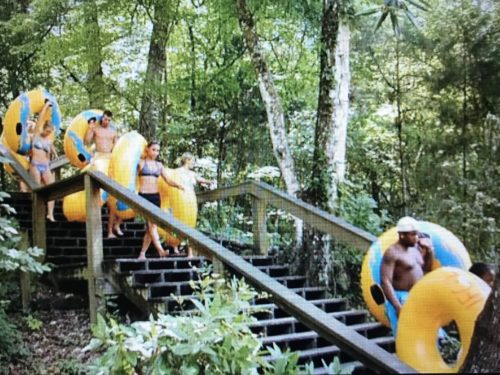
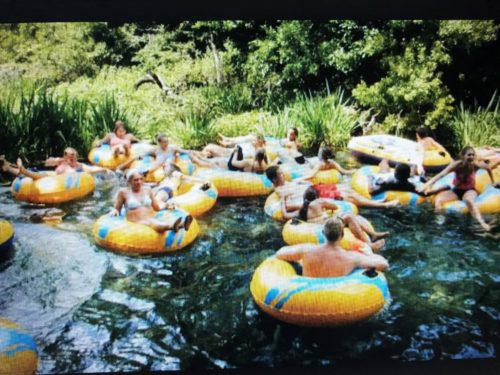
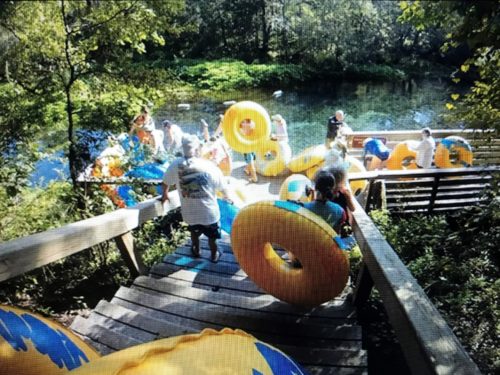
This is the spot where we put in.
Not our definition of fun at ALL!
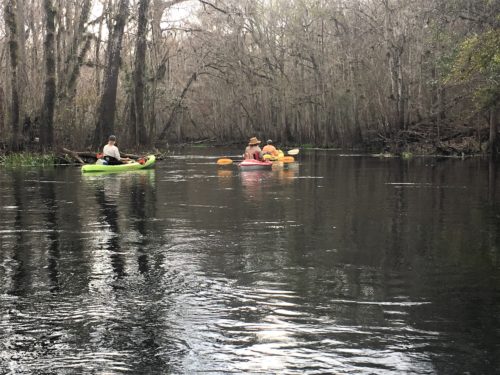
We did have to share the river with a few people today. : )
Too soon we came to the end of our glorious trip and had to get out (or paddle all the way back upstream!).
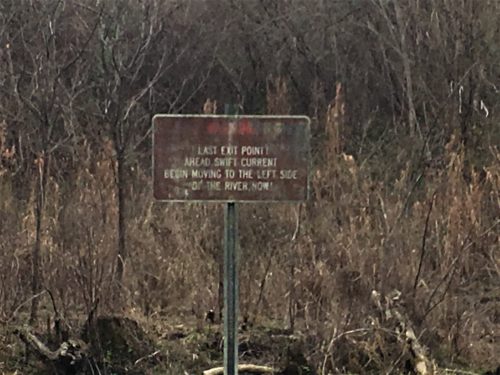
Almost done. : (
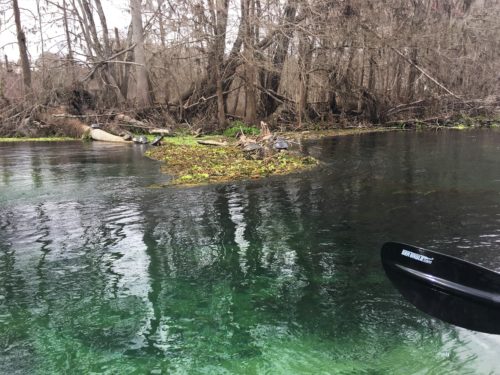
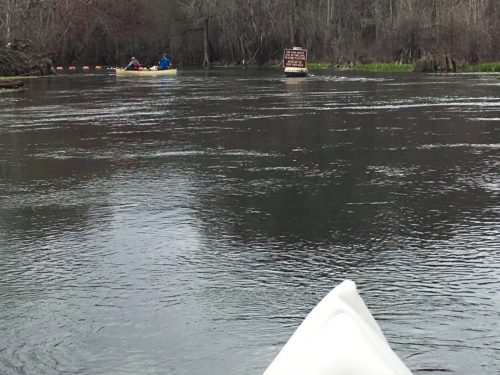
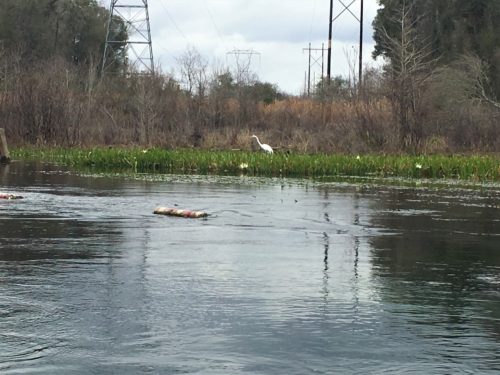
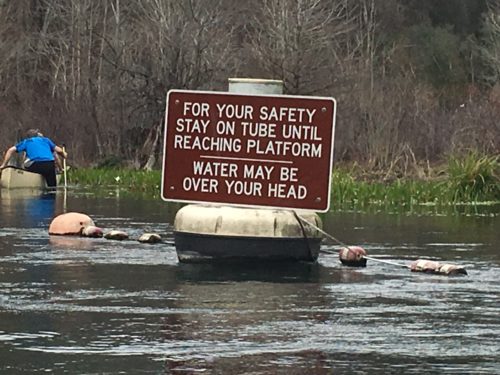
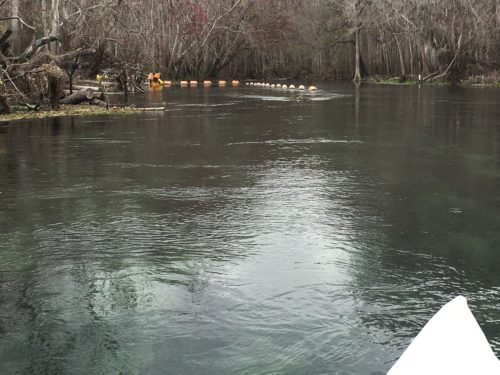
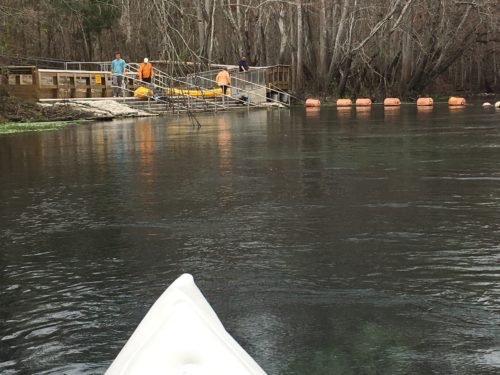
Last stop.
What a terrific way to spend a few hours!
But the day’s not over yet! Next up? Snorkeling at Head Springs. Yes, it was a bit chilly (at first) with 72 degree water, but it didn’t take long to get acclimated. I caught myself hyperventilating at first and had to intentionally slow down my breathing, but then I was fine.
And it was beautiful!!
But we don’t have a water camera, so we don’t have much in the way of water pictures. ☹
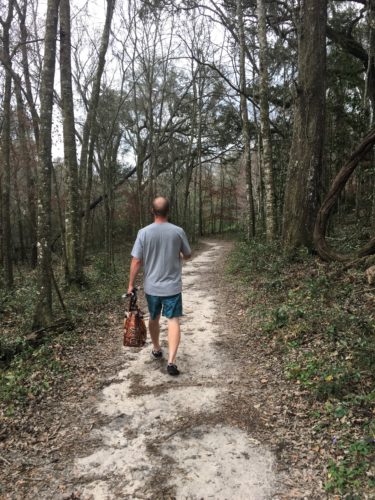
Here he goes, determination in his step and towels and snorkels in his bag.
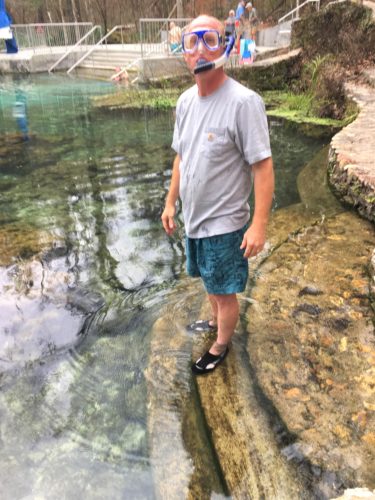
We have prescription snorkel masks so we can see underwater. They’re great!
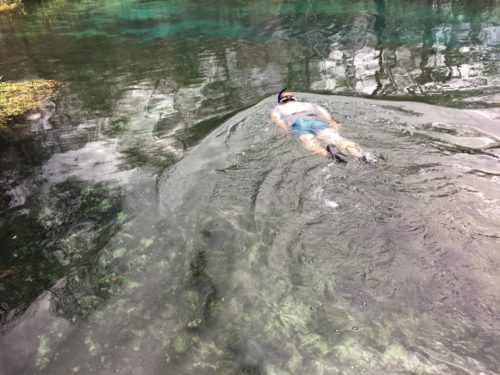
At one point, Blaine sucked in a deep breath and tried to swim to the bottom where the spring comes out. He didn’t quite make it, but he certainly got a lot further than me. I prefer to keep my airway open! : )
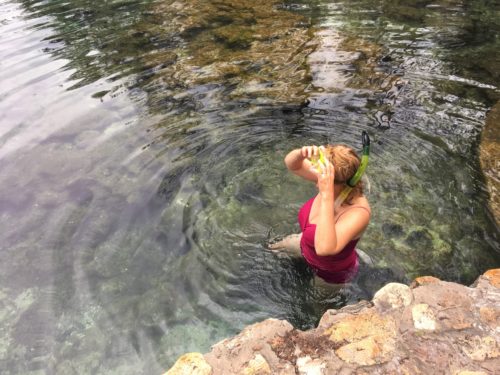
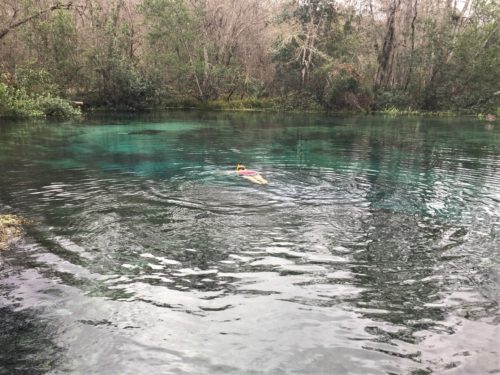
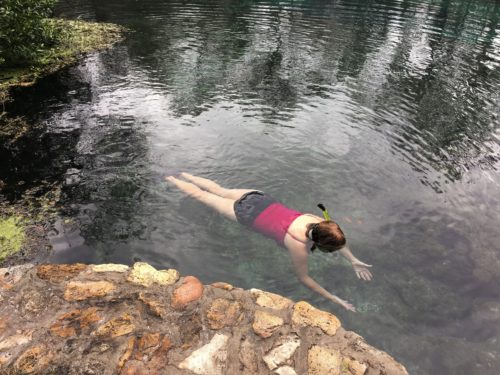
When we did this in Hawaii, if you were still, the fish would come up to you.
That’s why my hands are out.
But no such luck here.
How did fish get in here anyway??
I did, however find a couple of good and not so great pictures on-line to share, that sort of show what we saw. However, there were no pictures of the mermaid.
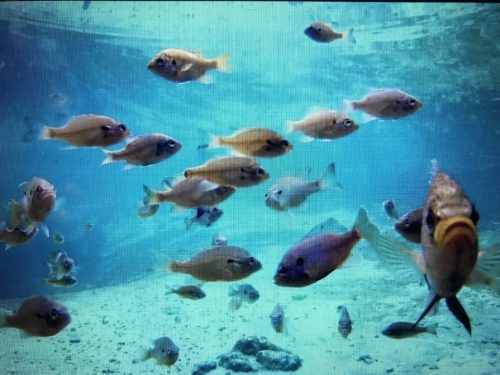
These are the fish we saw
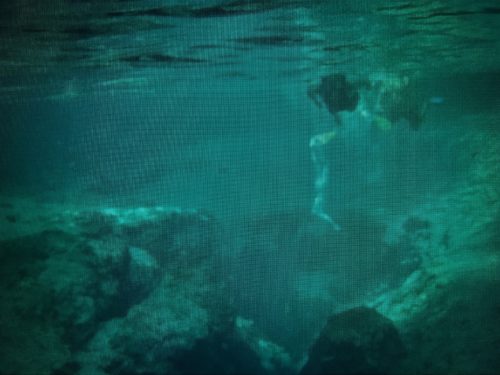
People snorkeling down to the spring
Yep! We actually saw a mermaid! Didn’t look quite like the ones in the movies, as this one had a black and white tail, but definitely a mermaid! Scared the begeebers outta me when I looked deep under me and there she was, looking back!
It was a plus-sized woman in a swimsuit and yes, a mermaid tail. Turned out she had another one on shore she put on a bit later. Guess what? You can buy ‘em on Amazon! The tails, not the mermaids. . . .
Wet hair, bedraggled and hungry, we found Bev’s for dinner. I’ve never gone out with wet hair before. I know for a fact, I wasn’t looking my best! Good thing it wasn’t a fancy place! The same guy we met on the trail the other day, recommended this restaurant. Great fattening, greasy, really good food! Burger and onion rings for Blaine, Patty Melt and onion rings for me. Corn nuggets for an appetizer. We didn’t know what those were, but Blaine read several reviews that said they were good. They were! Kinda like deep fried creamed corn.
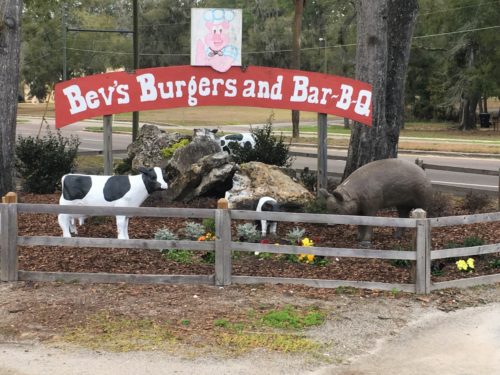
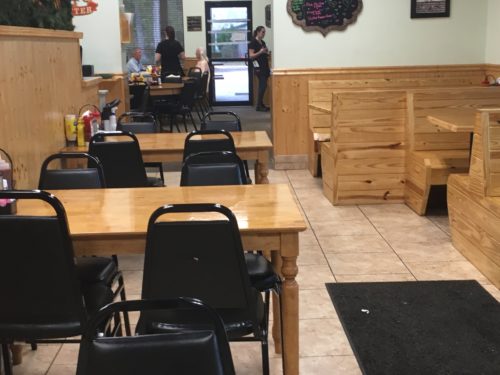
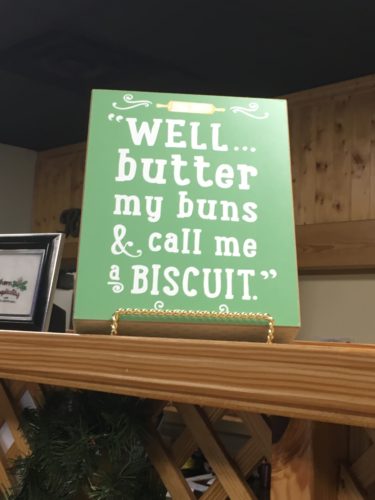
Thought this was funny!
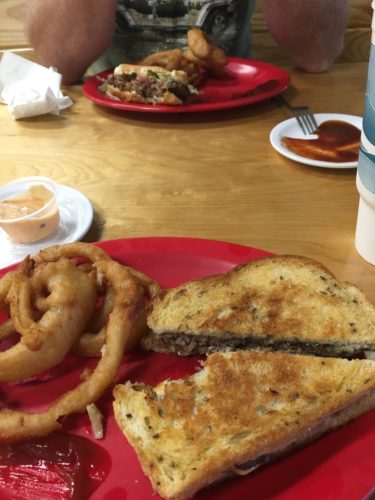
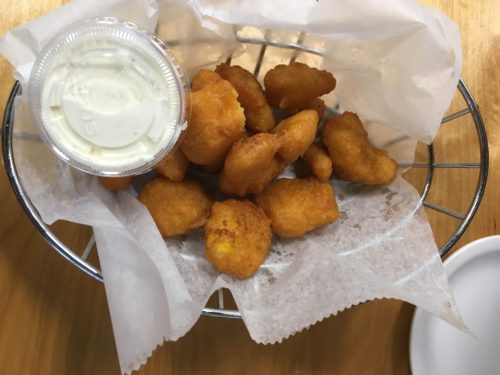
The sauce was kinda like ranch dressing – only different.
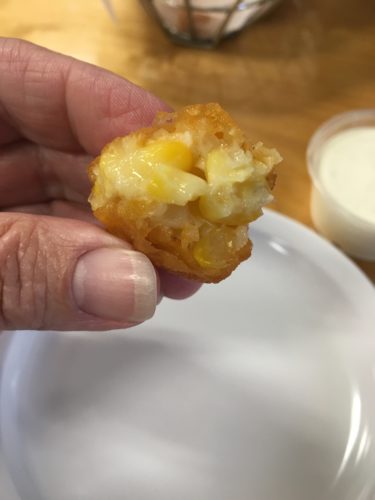
TOTAL MILES: 0 (hiking but 3 miles kayaking, plus whatever energy we expended snorkeling😊)
Year to Date: 124
Daily Average: 3.17
